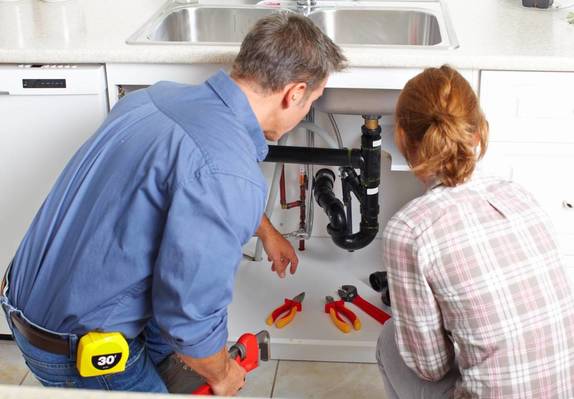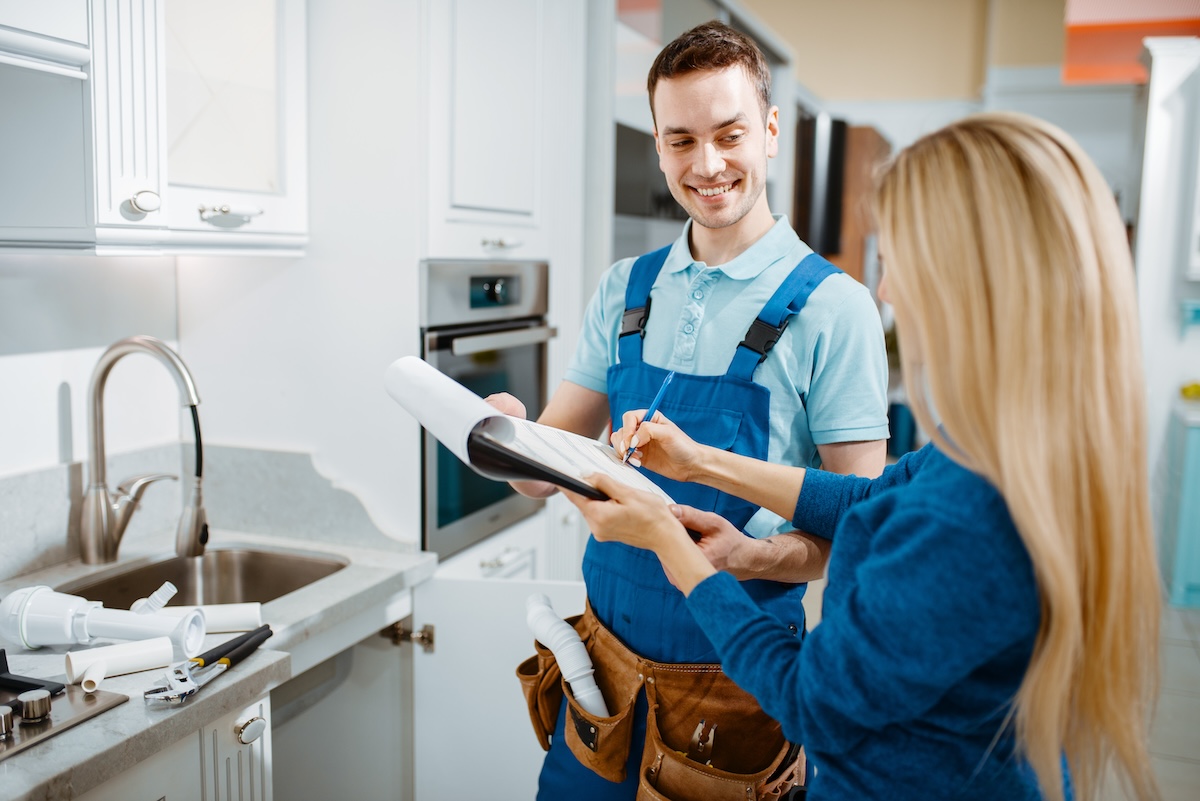They are making several good points regarding The Future of Plumbing: Trends and Innovations to Watch overall in the article down below.

Intro
The plumbing sector is going through a transformative stage driven by technical improvements and expanding issues for sustainability and performance. This post discovers arising patterns and innovations forming the future of pipes.
Smart Plumbing Systems
Including smart technology right into plumbing systems allows remote tracking, leakage detection, and automated maintenance. Smart sensors and IoT (Web of Points) tools permit property owners and plumbing technicians to check water use and identify concerns in real-time, leading to much more effective source administration and aggressive maintenance.
Water Effectiveness Solutions
With enhancing focus on water preservation, ingenious solutions are being developed to minimize water wastefulness in pipes systems. High-efficiency fixtures, greywater recycling systems, and clever watering controllers are among the modern technologies helping customers reduce their water impact while preserving comfort and convenience.
Sustainable Materials
The shift towards sustainability includes plumbing products, with an expanding choice for eco-friendly options. Biodegradable piping materials, such as PEX (cross-linked polyethylene) and HDPE (high-density polyethylene), offer longevity and resistance to rust without compromising ecological integrity.
Predictive Upkeep
Anticipating maintenance techniques take advantage of data analytics and machine learning algorithms to anticipate and protect against plumbing issues prior to they happen. By analyzing historical data and performance metrics, anticipating maintenance algorithms can recognize patterns and anomalies, making it possible for positive interventions to avoid costly repair work and interruptions.
Enhanced Reality in Pipes
Augmented Reality (AR) technology is revolutionizing plumbing by giving professionals with real-time visual advice for troubleshooting and fixing jobs. AR-enabled smart glasses or mobile applications overlay electronic info onto the physical atmosphere, helping plumbings envision pipeline formats, determine covert leaks, and execute fixings with precision.
Effect of 3D Printing
The development of 3D printing has actually introduced brand-new opportunities in producing pipes components. From custom-made fixtures to intricate pipe installations, 3D printing enables rapid prototyping and on-demand manufacturing, reducing lead times and allowing greater personalization in pipes style.
Health and Safety Features
In reaction to heightened issues for health and safety, pipes fixtures are including attributes such as antimicrobial surface areas, touchless operation, and self-cleaning systems. These innovations not just enhance hygiene yet likewise advertise user convenience and comfort.
Hygiene-focused Fixtures
Touchless taps, self-sanitizing commodes, and antimicrobial surface areas are ending up being progressively widespread in residential and commercial settings, minimizing the danger of bacterium transmission and promoting a cleaner, much healthier setting.
Water High Quality Surveillance
Innovations in water high quality tracking modern technologies make it possible for home owners to keep an eye on the pureness and safety of their water system in real-time. Smart water high quality sensors can find contaminants, pH degrees, and temperature variations, empowering individuals to take aggressive actions to make certain water safety.
Remote Plumbing Services
Remote diagnostics and virtual support are transforming the means pipes solutions are delivered. Through video conferencing and remote gain access to innovations, plumbing professionals can troubleshoot issues, give assistance for DIY repair work, and even do remote inspections, offering higher ease of access and convenience to house owners.
Obstacles and Opportunities
While plumbing innovations hold tremendous assurance, they likewise existing obstacles such as information privacy issues, regulative compliance, and the requirement for labor force training. Resolving these challenges requires partnership between industry stakeholders and regulatory bodies to ensure safe and responsible implementation of new modern technologies.
Governing Landscape
Regulative structures play a vital role fit the adoption of plumbing developments, with criteria and codes regulating everything from water performance to product safety and security. As innovations remain to progress, regulative bodies should adapt to make sure customer defense and environmental stewardship.
Future Overview
The future of pipes is characterized by proceeded advancement and assimilation with various other fields such as IoT, renewable energy, and building automation. By embracing sustainable practices, leveraging emerging modern technologies, and focusing on user-centric style, the pipes sector is positioned to address the advancing needs of culture while reducing its ecological footprint.
Conclusion
Finally, the future of pipes is specified by a convergence of technology, sustainability, and user-centric style. By embracing smart solutions, lasting materials, and positive upkeep techniques, the plumbing industry can improve effectiveness, advertise safety and security, and contribute to a much more lasting future.
Plumbing Industry Trends You Need To Know
Smart technology in plumbing
Homeowners want to be able to manage their homes from their phones. The technology exists to make that happen. From smart toilets to leak detector devices, the whole plumbing system can be managed on an interconnected network made up of sensors, IoT devices, and machine learning algorithms.
This allows for wireless control to turn appliances on and off, automate routines, and access advanced monitoring to track water usage and flag potential issues. Smart technology streamlines water consumption, maintenance and energy usage, creating a more efficient system.
Green plumbing
The data analysis possible with smart technology not only improves convenience and cost-effectiveness but also fulfills a high-priority customer desire – sustainability. Consumers are very aware of their impact on the planet and want plumbing solutions to reduce damage and support sustainability. Eco-friendly plumbing solutions are already starting to emerge.
Customers can opt for low-flow toilets, water-saving faucets, and connections to sustainable energy sources. Beyond monitoring water consumption, customers can conserve water through the installation of greywater systems. This is a system that collects water that has been used but is still clean enough for some household uses such as toilet flushing.
Shorter product pipeline
To keep up with modern plumbing, plumbers need modern tools that enable them to complete jobs more efficiently. One technology making strides in this area is 3D printing. By 3D printing key plumbing fixtures, plumbers can reduce wait times even for specialized fixtures. It minimizes delays often seen in traditional manufacturing that frustrate customers and prevent plumbers from taking on more work.
Off-site repairs
Augmented reality is making a splash in many industries including plumbing. Plumbers can map a building online so they can explore the plumbing system through augmented reality, identifying areas of maintenance and repair completely digitally. This technology can be applied quite widely in plumbers’ work including planning installations and training new recruits. It’s safer, smarter and more efficient.
Low-footprint materials
Another way for plumbing companies to reduce their environmental footprint and meet the customer demand for sustainability is by using recycled materials in their work. The products they source and manufacture such as pipes, fixtures and faucets can be made from recycled materials. This saves the planet while being just as effective.
Onsite water purification
Additionally, plumbing companies can be advocates of water conservation and ease the financial and environmental concerns of customers by offering water purification systems. New water purification technology such as reverse osmosis systems and UV systems make it possible for homeowners and business owners to thoroughly cleanse water, removing contaminants onsite. This means the water can be safely reused in more ways than greywater can be, establishing a water recycling loop.
Tankless water heaters
Another innovation of modern plumbing is tankless water heaters. The idea is that the water is heated on demand as it runs through the system instead of being heated in a water tank. This is more energy efficient and therefore cost-effective and eco-friendly because water isn’t heated needlessly.

We had been shown that editorial about from a buddy on a different web address. If you please take the time to promote this post if you enjoyed it. We treasure reading our article about The Future Of Plumbing: Trends And Technologies To Watch.
Call